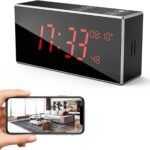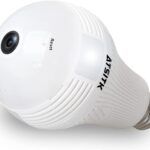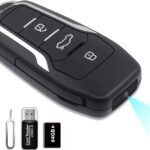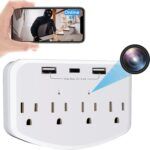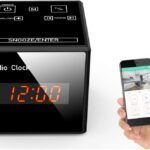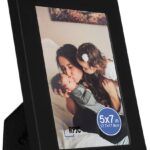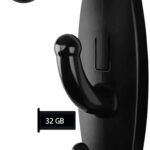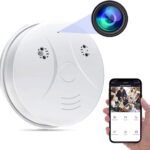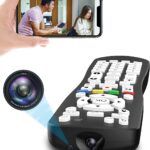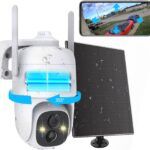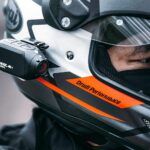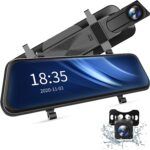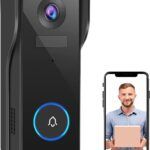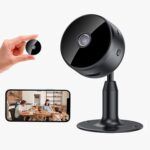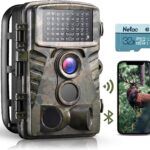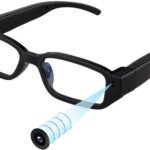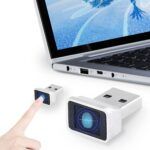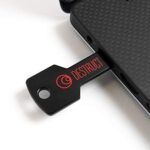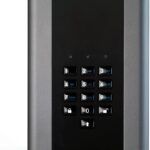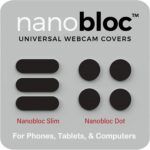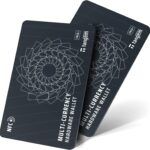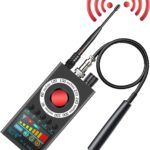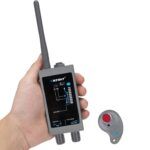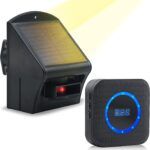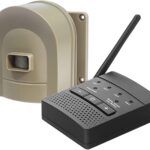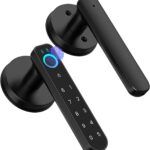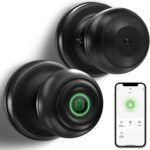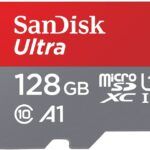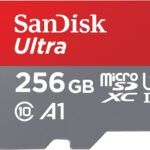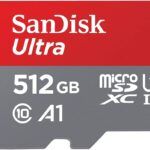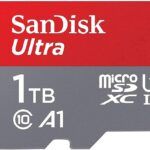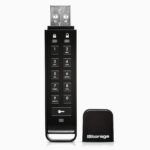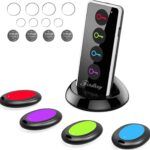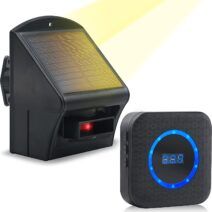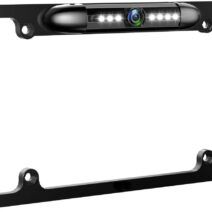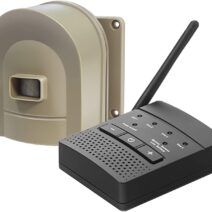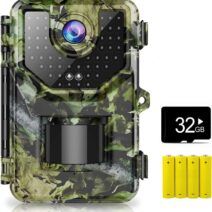- Waterproof vs Water-Resistant vs Weatherproof vs Weather-Resistant
Waterproof, water-resistant, weatherproof, and weather-resistant are terms used to describe the degree of protection a device has against water and weather elements.
- Waterproof means that a device is designed to resist water and can be submerged or exposed to water without damage. It is usually indicated by an IP rating, with the highest rating being IP68, which can withstand submersion in water up to a certain depth and time.
- Water-resistant means that a device can resist water to some degree, but it is not completely waterproof. It can handle splashes, rain, and minor exposure to water, but it cannot be submerged in water or exposed to heavy rain for an extended period.
- Weatherproof refers to a device’s ability to withstand exposure to different weather conditions, such as extreme temperatures, sunlight, wind, and rain. It can resist damage from weather elements, but it is not necessarily waterproof.
- Weather-resistant is a term used to describe a device that can resist the impact of weather elements to some degree, but it may not provide complete protection. It is usually designed to handle minor exposure to weather elements and may not be suitable for extreme weather conditions.
- What kind of environments are waterproof cameras or trackers suitable for?
Waterproof cameras and trackers are suitable for use in a variety of environments where traditional devices might not survive. They are ideal for outdoor activities such as hiking, camping, and fishing. These devices can withstand harsh weather conditions, including rain, snow, and extreme temperatures. Waterproof cameras and trackers are also great for use in aquatic environments such as swimming pools, rivers, lakes, and oceans. They can be used for underwater photography and videography, marine research, and scuba diving.
It is worth noting that not all waterproof cameras and trackers are created equal, and they may have different levels of resistance to water and environmental factors. Some devices may be able to withstand being submerged in water for a short period, while others can be used for deep-sea diving. It is essential to consider the device’s specific features and capabilities before using it in a particular environment.
- What is the difference between water-resistant and waterproof devices?
Water-resistant and waterproof are two terms commonly used to describe devices that can withstand exposure to water to some extent. Water-resistant devices can resist the penetration of water to a certain degree, but they are not fully waterproof. They are typically designed to be able to withstand splashes of water, rain, or snow, but they may not be able to function properly when submerged in water. On the other hand, waterproof devices are designed to be completely resistant to the penetration of water. They can be submerged in water for extended periods without sustaining damage, and can still function normally.
When it comes to cameras and trackers, water-resistant devices are suitable for use in mildly wet environments, such as during light rain or snowfall. They can also be used for activities like swimming or snorkeling, as long as they are not submerged for long periods. Waterproof devices, on the other hand, are ideal for use in harsher environments, such as during heavy rain or when submerged in water for extended periods. They are also suitable for activities such as scuba diving or surfing, where the device will be constantly exposed to water. It is important to note that the level of water resistance or waterproofing can vary between different devices, so it is important to check the specifications of the device to ensure it is suitable for the intended use.
- Is there a difference between weather-resistant and weatherproof?
The terms “weather resistant” and “weatherproof” are often used interchangeably, but they actually refer to different levels of protection against the elements. A weather-resistant device is designed to withstand exposure to light rain, humidity, and other mild weather conditions. These devices are often rated with an IPX4 or IPX5 rating, which means they can handle splashes of water or light rain without damage. However, they are not fully waterproof and cannot be submerged in water.
On the other hand, weatherproof devices are designed to provide protection against more severe weather conditions, such as heavy rain, snow, or extreme temperatures. These devices are often rated with an IPX6, IPX7, or IPX8 rating, which means they can withstand being submerged in water for extended periods of time or exposure to high-pressure water jets. Weatherproof devices are ideal for outdoor use, as they can withstand harsh weather conditions without being damaged or compromised.
- How is water resistance level measured?
Water resistance level refers to the extent to which electronic devices can withstand exposure to water or moisture. Devices are rated on a scale of IP (Ingress Protection) followed by two digits, with the first digit indicating the level of protection against solid particles like dust and the second digit indicating the level of protection against water. For example, an IP67 rating means the device is completely protected against dust and can withstand being submerged in up to 1 meter of water for 30 minutes.
Devices with a high IP rating (such as IP67 or IP68) are considered highly weather-resistant, as they can withstand prolonged exposure to water, dust, and other particles. MIL-STD rated devices are designed to meet specific military standards and are more durable and rugged than other devices.
Different devices have different water resistance levels depending on their intended use and design. Waterproof cameras and GPS trackers are designed specifically to withstand being submerged in water for extended periods of time. Weatherproof cameras and GPS trackers are designed to withstand exposure to rain, snow, and other types of weather, but may not be able to withstand complete submersion. It’s important to consider the intended use of the device and the water resistance level when purchasing and using these devices.
- What makes a device weatherproof?
A device is considered weatherproof when it is designed to withstand exposure to outdoor elements such as rain, wind, and extreme temperatures. Typically, weatherproof devices have a durable and rugged construction that allows them to operate in harsh conditions without getting damaged. They are also sealed with gaskets or silicone to prevent water, dust, or debris from getting inside the device.
Furthermore, weatherproof devices are often designed with specialized components that are resistant to corrosion, rust, and fading caused by prolonged exposure to the sun or other weather elements. This makes them ideal for use in outdoor settings such as construction sites, parking lots, or other areas where they may be exposed to the elements. Overall, weatherproof devices are engineered to be reliable, durable, and capable of operating effectively in a range of environmental conditions.
- How do I care for and maintain a waterproof device?
Caring for and maintaining a waterproof camera or tracker is important to ensure that it continues to function properly and lasts for a long time. Firstly, it is important to properly dry the device after it has been exposed to water. This can be done by gently wiping the device with a dry cloth or towel and allowing it to air dry completely before use. It is also recommended to store the device in a dry and cool place when not in use to prevent any moisture buildup.
Regular cleaning is also necessary to remove any dirt, dust, or debris that may accumulate on the device. However, it is important to avoid using any abrasive materials or chemicals as they may damage the waterproof seal or protective coating of the device. Instead, it is recommended to use a soft cloth or brush to gently clean the device.
Lastly, it is important to follow the manufacturer’s instructions and recommendations for the care and maintenance of the device. This may include regular firmware updates, battery maintenance, and checking the device for any signs of damage or wear and tear. By properly caring for and maintaining a waterproof device, it can provide reliable performance and durability in challenging environments.
- Can I use a waterproof device in extreme temperatures?
It depends on the specific device and its temperature ratings. Some waterproof cameras and trackers are designed to withstand extreme temperatures, while others may have limitations. It is important to check the specifications and user manual of your device to determine its temperature range. Using a device outside of its recommended temperature range could damage the internal components or reduce its functionality. If you are unsure, it is best to consult with the manufacturer or a professional before using the device in extreme temperatures.
- How accurate are waterproof GPS trackers?
GPS trackers are known for their high accuracy, which is typically within a few meters. The accuracy of a waterproof GPS tracker is determined by several factors, including the quality of the GPS chip and antenna, the number of satellites in view, and the presence of obstructions such as buildings or trees. However, even with these factors in play, waterproof GPS trackers are generally very reliable and can provide precise location data even in challenging environments.
GPS trackers or similar surveillance devices are often not directly waterproof, but come with protective casing in which they are placed. This casing is waterproof, and in most cases designed to never interfere with normal operation of the tracking device.
- Are there any limitations to using a waterproof camera or tracker?
While waterproof cameras and trackers are designed to withstand water and harsh weather conditions, they do have their limitations. For example, they may not be suitable for extreme temperatures, such as extremely high or low temperatures, which can affect the device’s performance. Additionally, while they may be able to resist water, they may not be able to withstand prolonged submersion or exposure to certain chemicals.
It’s also important to note that waterproof hidden cameras and other surveillance devices are not foolproof and may still experience malfunctions or damage due to accidents or other unforeseen circumstances. Users should still take care when handling these devices and follow manufacturer instructions to ensure they last as long as possible.
- Can weatherproof devices be charged with solar power?
Some weatherproof devices can be charged with solar power. These devices often come with a solar panel that can be attached to the device to charge it using sunlight. This is a useful feature for outdoor activities where access to electricity is limited. It is important to note that the charging time and efficiency may vary depending on the weather conditions and the strength of the sunlight. However, with the advancement of solar technology, many weatherproof devices are becoming more efficient and can charge quickly even in low light conditions. Overall, having the option to charge a weatherproof device with solar power is a convenient and eco-friendly feature.
- How do weatherproof cameras or trackers handle dust and dirt?
Weatherproof cameras and trackers are designed to handle various weather conditions, including dust and dirt. These devices typically feature sealed enclosures that prevent dirt and dust from entering the device. However, it is important to note that excessive exposure to dirt and dust can still affect the device’s performance and lifespan. It is recommended to clean the device periodically to maintain its functionality. Additionally, some weatherproof devices may come with special protective coatings or features that make them more resistant to dirt and dust. It is essential to read the product specifications and maintenance instructions before purchasing and using weatherproof cameras or trackers.
Waterproof and water resistant hidden cameras, trackers and other surveillance devices are designed to withstand harsh weather conditions, including rain, snow, and water immersion. They can capture high-quality photos and videos without being damaged by water.
Showing all 7 products:

ChunHee Wireless Solar Driveway Alert
$35.99
GLK License Plate Backup Camera
$35.99
Hosmart Driveaway Wireless Alarm Sensor
$44.99-
Sale!

Onamicit Tiny Magnetic GPS Tracker (No Subscription)
$16.99 
Optimus Vehicle GPS Tracker (Wireless)
$39.95
Vikeri Hunting Trail Camera
$89.99
Zeerkeer Mini GPS Tracker
$66.98
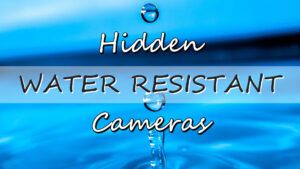
Weatherproof and water-resistant cameras, trackers and other surveillance tools are designed to withstand various weather conditions and water exposure. These devices are ideal for outdoor use, such as surveillance of a construction site, monitoring wildlife, or recording water sports. Water-resistant cameras and trackers can handle splashes of water, rain, and light moisture, while weatherproof devices can withstand more extreme weather conditions, including heavy rain, snow, and extreme temperatures.
These cameras and trackers often have protective features such as sealed enclosures, gaskets, and waterproof coatings that prevent water from entering the device’s sensitive components. With weatherproof and water-resistant cameras and trackers, you can capture high-quality footage and track your outdoor activities worry-free.
It’s important to remember that hidden cameras are generally water-resistant, not waterproof. They will continue to function when exposed to water or during rain, but are not intended for prolonged exposure to water or submerging. Exact water-resistance depends on each device, so you must familiarize yourself with specifications of each individual product to learn what level of water exposure is suitable.
- Waterproof means that a device is designed to resist water and can be submerged or exposed to water without damage.
- Water-resistant means that a device can resist water to some degree, but it is not completely waterproof. It can handle splashes, rain, and minor exposure to water.
For customers looking for fully waterproof cameras take a look at our Action Cameras offered. Most action cams are designed to work even when fully submerged in water.
Having waterproof and water-resistant devices can provide peace of mind and convenience for various outdoor activities, such as swimming, hiking, and camping. With these devices, there is no need to worry about water damage or the effects of harsh weather conditions on the equipment.
You may also be interested in Outdoor hidden cameras or Weatherproof cameras & trackers.
However, it is important to note that the level of water or weather resistance varies among different devices, and it is crucial to carefully read the specifications and usage instructions to ensure that they are used properly. Overall, these devices can offer reliable performance and durability in challenging environments.

